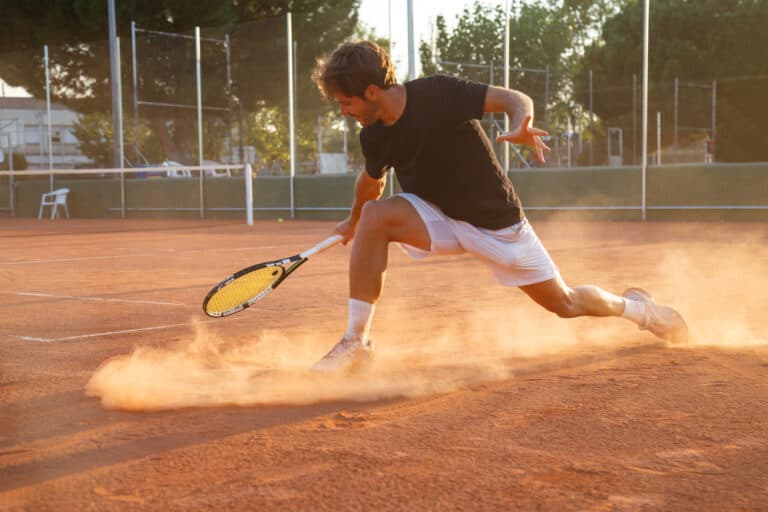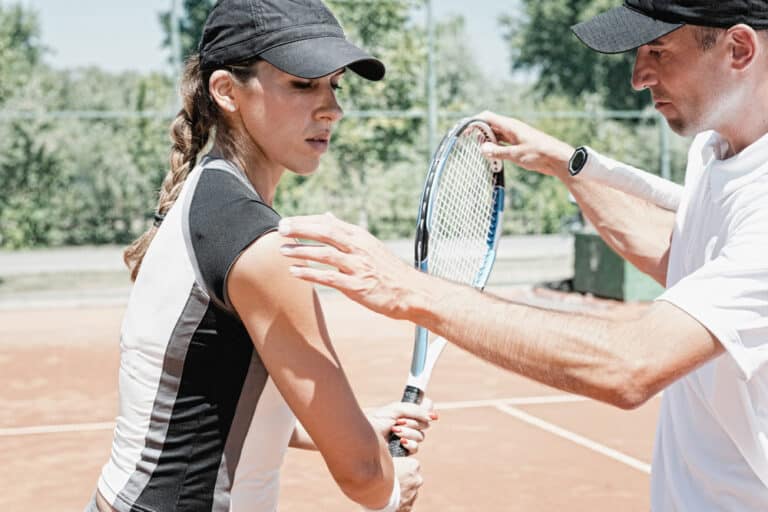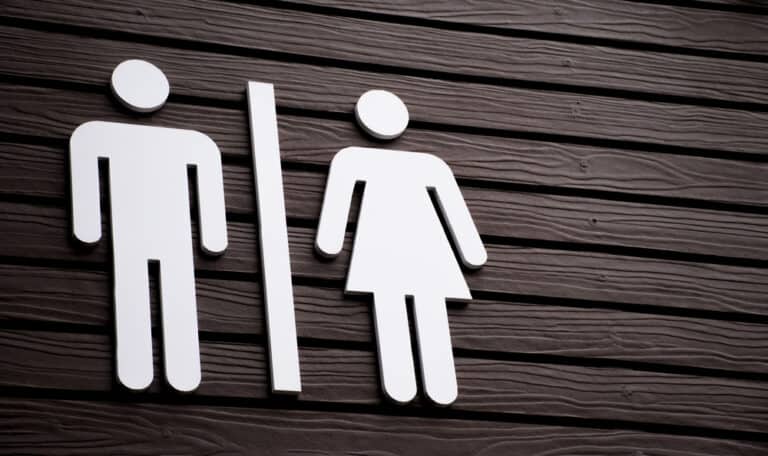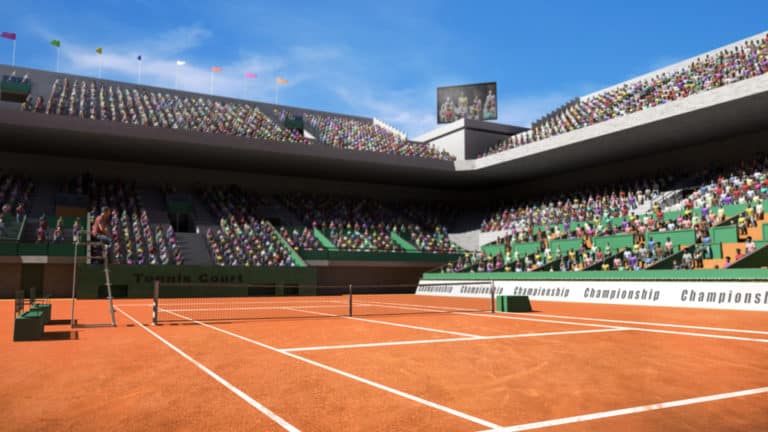When Do You Switch Sides In Doubles Tennis?
When playing singles tennis, there is no guesswork about who will play the shot or which side to stand on because you are the only one serving or receiving your opponent’s serves and volleys. When playing doubles, however, who serves or receives, and where you stand at different times is not only a matter of following the rules correctly but could mean the difference between winning and losing! One common question is when to switch sides with your partner in doubles tennis.
Doubles tennis rules allow partners to switch the serving order, but players may only switch sides at the beginning of a set, including at the start of a 10-point match tiebreak. This serving order must then continue until the end of that set. Partners may switch again at the next set.
The rules that indicate when a player can switch sides of the court keep the game flowing and keep doubles tennis fair and equal for players of all skill levels. If you are playing for fun, there may be some leeway with your opponents if you get the rules wrong, but in tournaments, players are only allowed to switch sides at specific times during match play. Keep reading to get all the information you need about when to switch sides in doubles tennis.
Deciding Which Pair Serves First In Doubles Tennis
Before starting the match, you must first decide with your opponents which doubles pair will serve first and which pair will receive first. Once this is done, it is then up to each pair to decide which pair will make the first service or receive the service. Deciding which pair will serve first can be done by a coin toss or something similar, or as mutually agreed on – for instance, mutually deciding that the losers of the last match serve first or something similar.
Deciding Which Player Serves And Receives On The First Ball
When the serving pair begins the match, either of the players in that pair may serve the first ball. Once the order is decided and the first ball has been played, the same player must serve for the entire game. Players cannot switch sides at any time of their choosing during play.
Similarly, either person in the receiving pair may receive the first ball on the deuce (right) court while their partner will receive all serves to the ad (left) court. This must then be the order for receiving for the entire set. After the service, either partner in the receiving pair may return the ball; there is no need to alternate each time.
For example: If your partner serves in the first game, one of your opponents will serve in the second game, you will then serve in the third game, the other player on the opposing team will serve in the fourth game, and your partner will then serve on the fifth game, and so the rotation will continue until the end of the set. When a new set starts, the serving double can choose to change this order or keep it the same. The receiving pair can do the same.
Deciding Who Should Serve At The Beginning Of A Set
Remember that each pair can decide who will serve the first ball and who will receive it at the beginning of a new set. Even the player who served last to end the first set can serve first in the second set, and so on. You do not have to continue the order you used in the previous set into the following set; as a doubles pair, you are allowed to choose who starts serving at the beginning of each new set.
Because this can become a strategic decision – and may even affect the match’s outcome – what is the best way to decide who should serve at the beginning of a set? The obvious answer might be that the stronger server should always start. This is generally believed to be a good idea because as the set progresses, it is likely that the player who served first will serve more games in total. But the player with the stronger serve is only one factor to consider. It may be to your advantage to also consider:
- Who in your doubles pair serves better into the sun or the wind? This may be the weaker but more consistent server,
- Which of you is better at the net for the return? A strong service without the ability to return the ball after the first return is not as useful as a weaker serve but a much stronger player on the net,
- Who is better to start that set in the circumstance, e.g., does one player have more energy, is more warmed up, etc.
- Later in the game, it may be better to allow the person with stronger nerves to start a set if the pressure is on.
There are many considerations to take into account when deciding which partner should serve at the beginning of a set.
Where Is The Best Place To Stand When Serving?
To make the most of the easy return volley after the serve, the server’s partner usually stands at the net on the opposite side of the court in doubles tennis. This is the general formation, but the server’s partner can actually stand anywhere. It is uncommon, but the server’s partner can even stand at the baseline with the server.
If the pair has a particular strategy in mind, the pair can even stand on the same side and is known as an ‘Aussie Formation’ designed to coax their opponents to return the ball down the line.
Because there are several places the partners can stand and formations that can be made, it is good to talk to your partner and decide the best place to stand when serving, receiving, and switching sides.
Where Is The Best Place To Stand When Returning?
When positioning yourselves to return the ball, some thought needs to be given to how to position stronger players and what formation works best as a pair and against your opponents. Some pairs choose for the returner’s partner to stand at the net, while others position both players at the baseline. The positioning is less important than the planning and having a good strategic reason to stand in different formations.
When returning, however, the receiver’s partner may not stand on the same side as their partner. A player must stand in the court from which they are receiving the serve, with the partner standing in the opposite court. Standing on the same side when receiving is considered an obstruction.
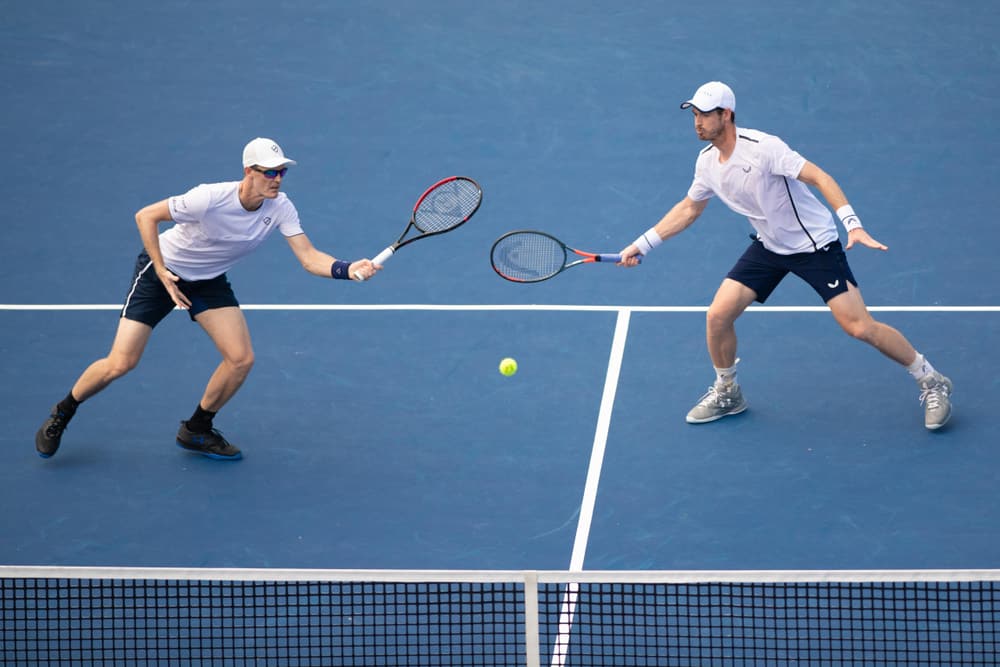
Conclusion
When playing doubles tennis, players in the same pair may switch sides to maximize their combined skill levels and advantage, but they may do this only at the beginning of a new set. This rule is in place to prevent a pair from switching sides at every point so that both players each return on about half the points of a set.
Deciding where to stand when starting the new set is a matter of strategy for both the serving pair and the receiving pair, and consideration needs to be given to which is the best formation to choose. Keep to the rules of when to switch sides in doubles tennis, and the sport will be enjoyable for all who play.
Sources
- http://s3.amazonaws.com/ustaassets/assets/436/15/rule__etiquette_booklet.pdf
- https://www.usta.com/en/home/improve/tennis-rules/national/can-i-change-the-serving-order-in-doubles.html
- https://www.usta.com/en/home/improve/tips-and-instruction/national/doubles-tennis-rules-tips.html
- https://mytennishq.com/tennis-doubles-rules-everything-you-need-to-know/
- https://woman.thenest.com/beginner-tennis-doubles-rules-1549.html


